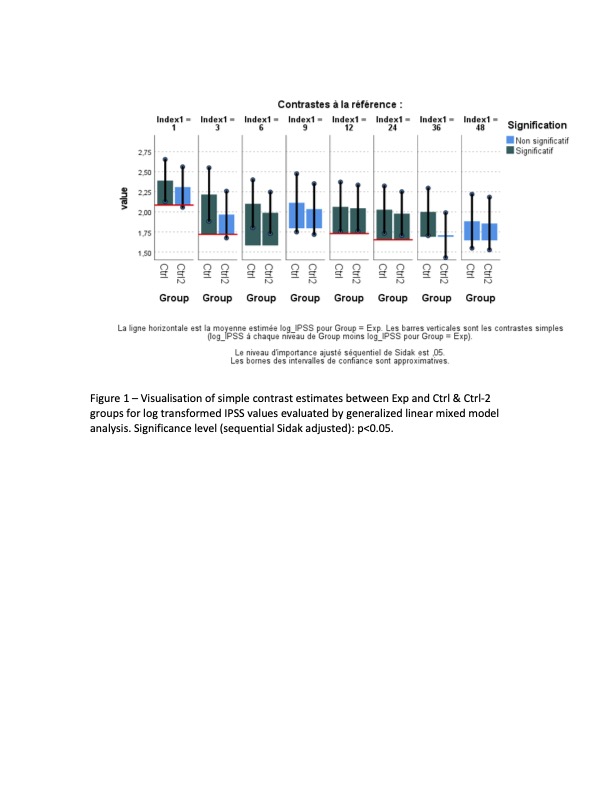Ultra-hypo compared to moderate-hypo fractionated prostate IGRT with HDR brachytherapy boost.
PD-0579
Abstract
Ultra-hypo compared to moderate-hypo fractionated prostate IGRT with HDR brachytherapy boost.
Authors: Andre-Guy Martin1, Damien Carignan2, Marie-Michèle Beaudry1, Élyse Ménard3, William Foster1, Éric Vigneault1, Sindy Magnan1, Bernard Lachance1, Éric Poulin1, Frédéric Lacroix1, Louis Archambault4, Luc Beaulieu4, Philippe Després5
1CHU de Québec - Université Laval, Radiation Oncology, Quebec, Canada; 2CRCHU de Québec, CRCEO, Quebec, Canada; 3CHRCHU de Québec , CRCEO, Quebec, Canada; 4CRCHU de Québec - Université Laval, Physique médicale, Quebec, Canada; 5CRCHU de Québec - Université Laval , Physique médicale, Quebec, Canada
Show Affiliations
Hide Affiliations
Purpose or Objective
To compare treatment tolerability & toxicity of an HDR brachytherapy (BB) combined to an ultra-hypo fractionated (UHF) prostate radiation therapy regimen as opposed to two moderate hypo fractionated (MHF).
Material and Methods
This interim analysis of a prospective mono centric phase 2 study includes 75 prostate cancer patients, mostly intermediate risk, recruited between July 2015 and September 2021. Using an image guided radiation therapy technique (IGRT), 25 Gy in 5 fractions plus 15 Gy HDR BB were delivered to the experimental arm (Exp). The control groups consisted of contemporary patients treated with IGRT and HDR BB (15 Gy HDR) with either 37.5 Gy in 15 fractions (Ctrl; n=225) or 36 Gy in 12 fractions (Ctrl-2; n=119). IGRT treatment time is reported. Patient reported outcomes were collected using the International Prostate Symptom Score (IPSS) questionnaire at baseline and at each follow-up visits. A comparative linear mixed model analysis was performed on log transformed IPSS values. Expanded prostate cancer index composite-26 (EPIC-26) was also reported and compared for the Exp and Ctrl population with a mixed model analysis. Biochemical relapse-free survival (BRFS) is reported.
Results
The 3 groups were similar with no statistical differences regarding: the median age (68 years), stage (T1C), Gleason scores (7), PSA (<10) and risk grouping (favorable intermediate). Median follow-up was 8, 63 and 49 months respectively for Exp, Ctrl & Ctrl-2. The mixed model analysis showed that mean IPSS scores diverge significantly, favoring the Exp compared to Ctrl for all time points except at 9 and 48 months. When comparing to Ctrl-2, there were significant differences in favor of Exp at 6, 12 and 24 months. Analysis of EPIC-26 data showed no differences throughout follow-up between Exp and Ctrl-2 in all domains. The median treatment time to deliver IGRT was 7 days in the UHF group compared to 17 and 22 days in the control groups. Considering a short follow-up in the Exp group, its BRFS was 100% compared to 94.6 and 88.5% for Ctrl-2 & Ctrl respectively, these differences are not significative. 

Conclusion
The UHF treatment scheme with HDR BB seems to be significantly better tolerated at multiple FU time point compared to the control treatment arms and saves 10 to 15 days in treatment time. Given the short FU, UHF seemingly provides similar BRFS, if not superior to control groups. Therefore, we will pursue accrual to our phase 2 study.